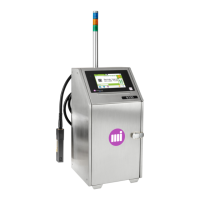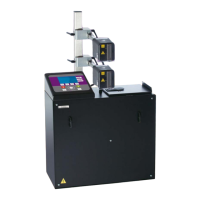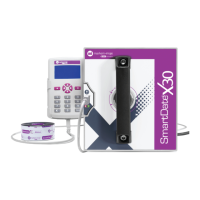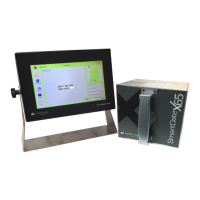External communications
A36951-C.doc
212/236
Ŷ Outputs
All outputs are optocoupled or are on relay contacts.
Electrical characteristics of the optocouplers
Ƒ Power supply voltage between signal + and signal – (common): 55 V
Ƒ Maximum output current: 20 mA
Ƒ Maximum power: 100 mW per optocoupled unit
Ƒ Maximum operating frequency: 10 KhZ
Print start signal output
The SPROG and COM SPROG outputs for each head are used to provide a print
synchronization signal on a message. This capability makes it possible to obtain a signal
output view of a message during a continuous printout, or to establish when message
printing ends.
This message synchronization output uses the characteristics of a high-speed
photocoupler with an open collector output type phototransistor.
This output also operates in BUSY mode (with the signal 180q different from the SPROG
mode signal). See jumper position table.
Counter 1 final value output
The VALFINI 1 and VALFINI 2 signals show when the final value of counter 1 on the
corresponding head has been reached. The green LEDs on each output show that the
signal status is active.
Alarm outputs
Three alarms are available on the printer:
Ƒ General alarm (amber):
This alarm indicates a printer malfunction, which does not disable printing. It is
generated to attract the user's attention so that the cause of the problem can be noticed
and corrected
Ƒ Head 1 ready to print alarm:
This alarm indicates a malfunction on head 1, which disables printing. It can be linked to
a flashing light unit or to an audible alarm and can also be hooked up to an interface to
shut off the power supply to the conveyor and halt the production line.

